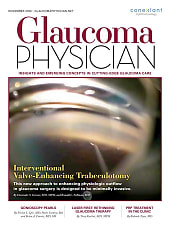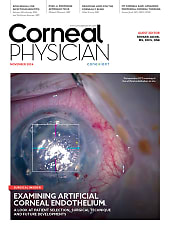In June, we hosted the 4th annual American Retina Forum (ARF) national meeting in Puerto Rico. The scientific program included great discussions on a spectrum of topics encompassing medical retina, surgical retina, uveitis, and practice management. But we also observed the old adage “work hard, play hard,” enjoying a variety of excursions on the beautiful island of Puerto Rico. We are grateful to our colleagues in Puerto Rico, particularly our meeting president and host, Dr. Gabriel Benitez, and our industry partners for such a successful meeting. We were blessed to have respected local colleagues, including Dr. Maria Berrocal, Dr. Victor Villegas, and Dr. Armando Oliver, provide the keynote speeches. Please visit our website (www.retinaforum.org ) for more information and photographs.
I am honored to introduce another edition of New Retinal Physician. The scenarios presented in this publication come directly from ARF members. Uveitis provides a connection between ocular and systemic disease processes. There is no better arena for limiting morbidity and mortality than in the assessment of uveitic conditions. Dr. Gensure and Dr. Flaxel discuss a rare case of Whipple disease–related uveitis (p. 10). Interestingly, this patient had severe dementia and was uncooperative—an example of how examination under anesthesia (EUA) and vitreous biopsy are effective in the setting of communication barriers.
As a complement to their discussion, Dr. Enghelberg, Dr. James, and Dr. Kuriakose introduce “uveitisOnCall,” a mobile application they helped to develop that can improve the assessment of uveitic conditions and avoid unnecessary tests (p. 16). With healthcare costs contributing to the rapidly expanding federal deficit, many physicians feel a responsibility to be cost-conscious. This application not only guides the diagnostic approach, but also potentially reduces testing expenses.
Retina specialists are often required to “save the day” following cataract surgery complications. Our mantra could be, “Hope for the best, but plan for the worst.” Dr. Matherne, Dr. Crowder, and Dr. Lin present a unique case of posterior uveal effusion syndrome (PUES) following cataract surgery where the patient presented with decreased vision and a refractive shift (p. 7). It is noteworthy that infectious etiologies (syphilis and tuberculosis) were ruled out, another example of where morbidity and mortality were assessed prior to further intervention. Remarkably, Dr. Lin’s team was able to improve the patient’s vision with scleral window surgery—a technique we should all aim to learn.
In this edition’s practice management section (p. 18), cybersecurity expert Scott Blumberg provides insight into how hackers may try to compromise a practice’s email communications, and how to avoid this potentially costly threat by implementing multifactor authentication.
If you are an early-career retina specialist interested in writing for New Retinal Physician, please feel free to contact me, or come visit my ARF colleague Dr. Mitul Mehta and I during the American Academy of Ophthalmology’s annual meeting in Chicago, September 30 to October 3. Mitul and I look forward to seeing you in the Windy City for more camaraderie and mutual growth! NRP
— Hemang K. Pandya, MD, FACS
President, American Retina Forum
Co-Chief Medical Editor, New Retinal Physician









